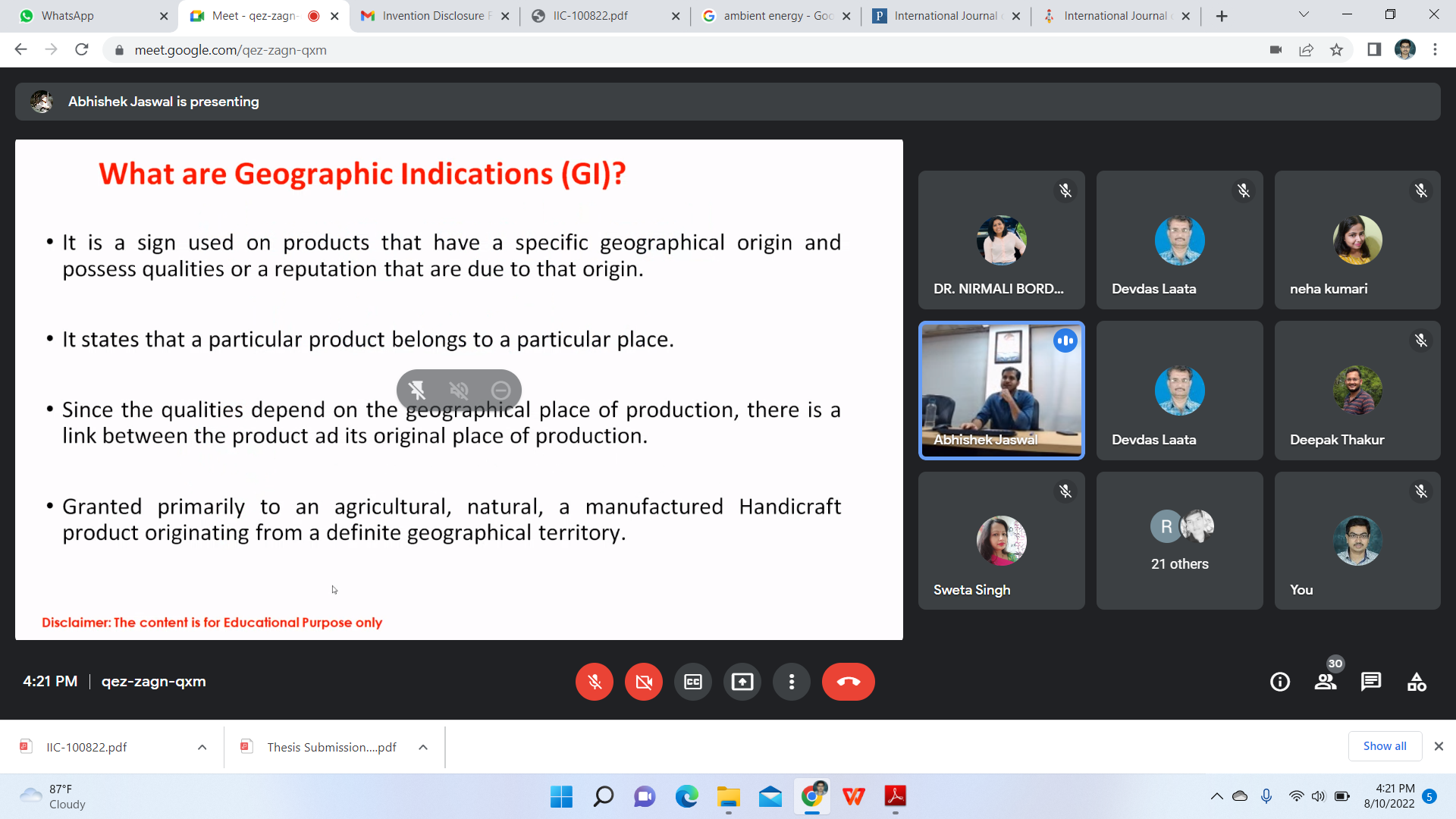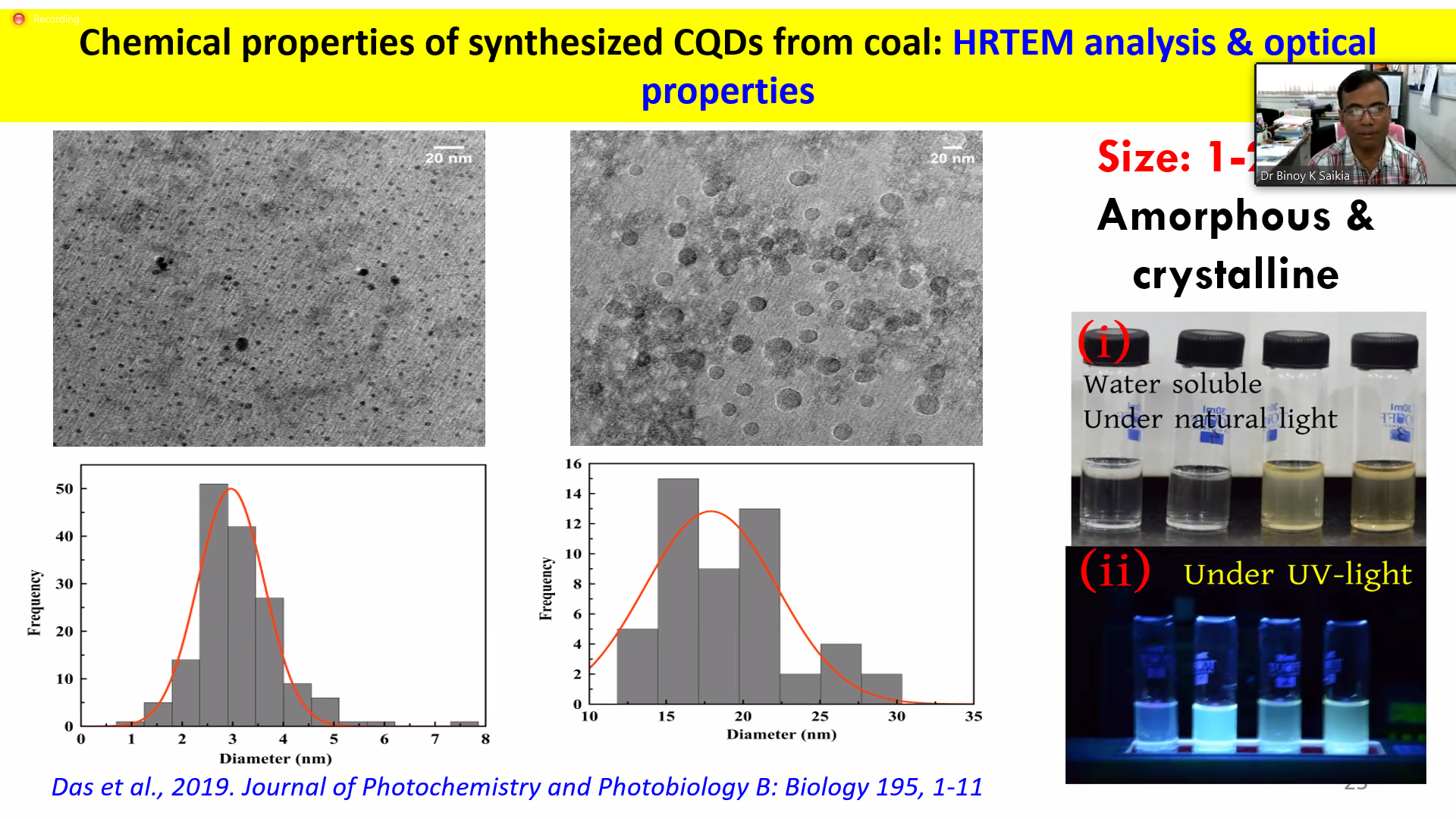|
Latest Update
Institution’s Innovation Council, Central University of Jharkhand along with MoE’s Innovation Cell, Govt. of India hosted a talk on IPR Awareness Program under National Intellectual Property Awareness mission following the theme of Creative India; Innovative India on 10th Aug 2022 The programme started with Dr. Bhaskar Singh and Dr. Devdas Laata briefing about the program and Institute Innovation Council. Dr. Bhaskar Singh then explained about the theme of the day’s lecture and introduced Mr. Abhishek Jaswal. Mr. Abhishek Jaswal, examiner of patents and design, Government of India started his lecture by giving a brief introduction and definition of intellectual property rights and its various types such as patents, designs, trademarks, copyrights etc. He then explained about the patents and various factors associated with it such as granting of term, Statuary rights given to inventor, Monopoly rights and territorial rights by giving an example of LED bails used in international cricket matches. He then proceeded by briefing about the criteria and conditions for obtaining the patents with several examples of patents like drones, band phones, foldable cloth hangers etc. Along with the types of inventions which cannot be patented. Further, he explained about the various steps taken by government of India for promoting the IPR such as reduction of patent filing fee under Patent (Ammendment) Rules, 2021, with a detailed overview of steps from filing to grant of patent.
After this, he explained about the IPR in reference to designs. He shed light on various aspects of designs and its importance by giving an example of designs of bottles. He then while explaining various criterias for obtaining design registration also gave examples of designs which cannot be registered. He continued by outlining a detailed overview of steps from filing to registration of a designs. Continuing with the IPR in reference to trademarks, copyrights and Geographic Indications (GI), he shed light on various types, importance, term and identification of trademarks, copyrights and Geographic Indications. Along with various steps involved from filing to grant of copyright and trademark.  He then concluded his lecture by briefly describing about semiconductor integrated circuit layout designs (SICL design) and points to remember while filing for patents. The lecture session ended with various Q&A and interactions between participants and Mr. Abhishek Jaswal and vote of thanks given by Dr. Bhaskar Singh. |






